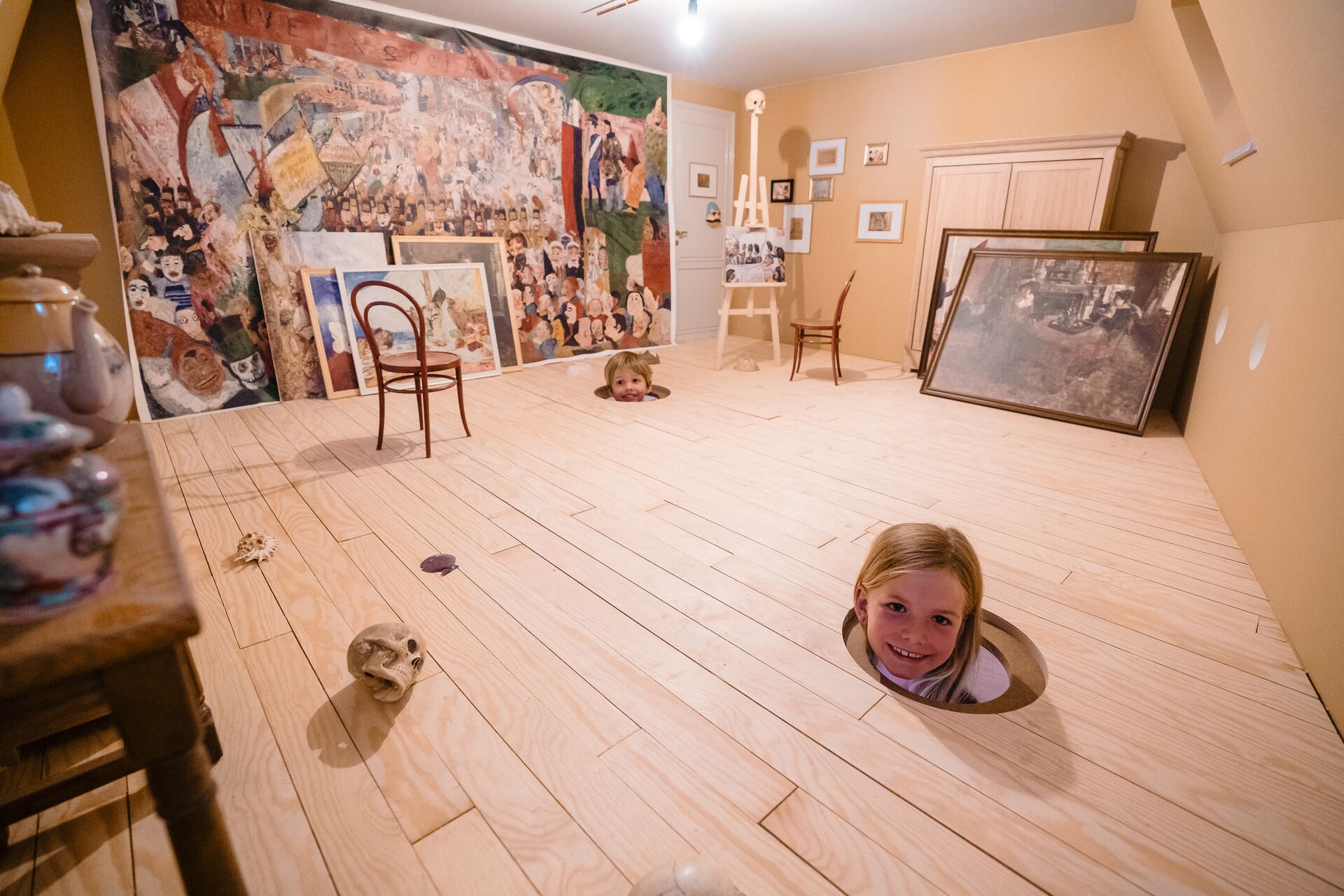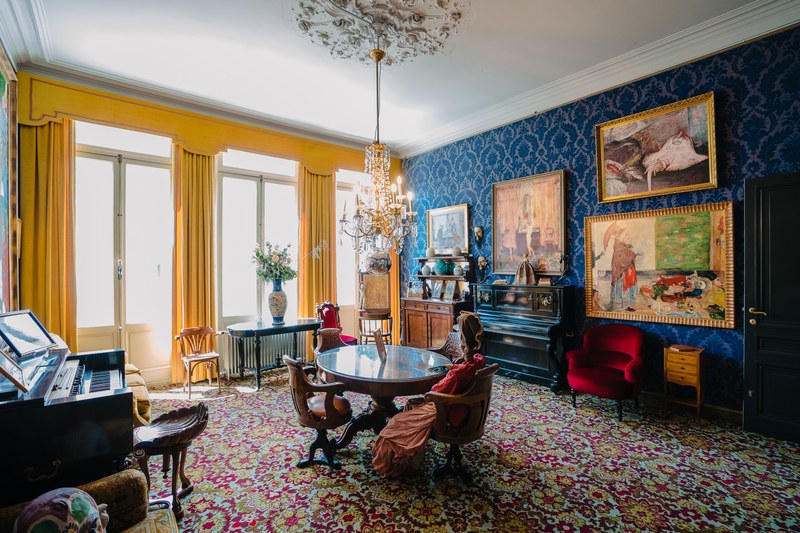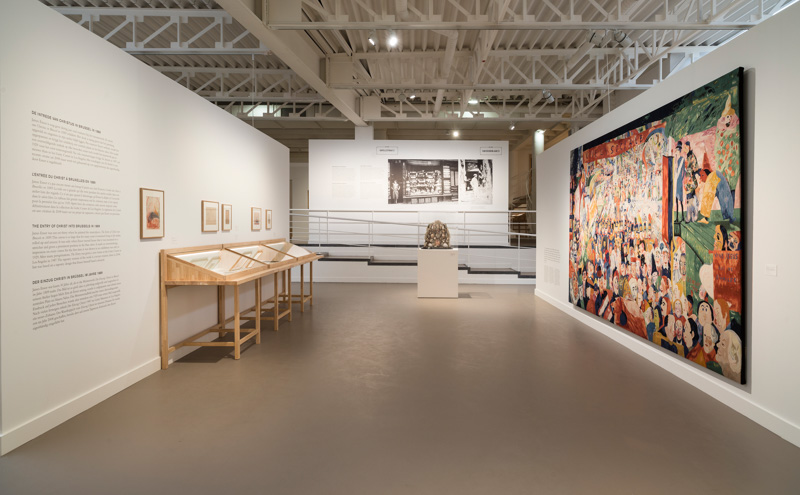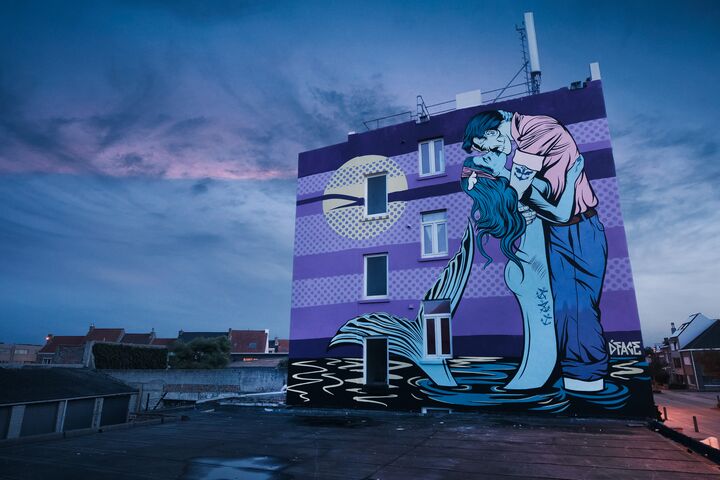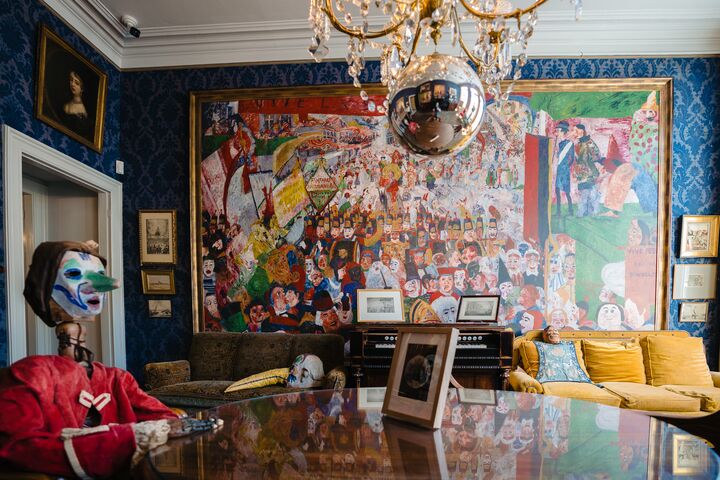James Ensor, the artistic patron saint of Ostend. His name is inextricably linked to this quirky coastal city. A day in Ostend is a dream introduction to Ensor’s universe.
James Sidney Edouard, Baron Ensor (1860-1949) is an important figure in modern art. His name still resonates as strongly as ever. Ensor’s impressive collection- some 850 works of which are known - are both experimental and recognisable. Humour, satire and the grotesque are recurring elements. He drew much of the inspiration for this work from his home town of Ostend.
The grandmaster was born in this city in 1860, and in 1949 he drew his final breath there. The city remained his home for his whole life. This environment also seeped into his works. As a boy, James grew up to the sound of the North Sea, in the little shop run by his parents, uncle and aunt. In the shop they sold souvenirs, shells and all sorts of playful items such as carnival masks. The latter would inspire Ensor for eternity. These masks were a constant in his impressive work, together with themes such as death and a marked aversion to the bourgeoisie. A masterpiece like The Intrigue is the perfect example of this.
Ensor House
Thanks to this unbreakable band, Ostend is still the perfect place to discover Ensor today. We can follow in his footsteps, on a journey of discovery through his home city. This journey starts at one of the cornerstones of his existence: the Ensor House. It was at this building in Vlaanderenstraat, less than 100 metres from the beach, that he spent the last 30 years of his life. A large part of his work saw the light of day here. Today this place pays tribute to the man, as a museum and visitor centre. The Ensor House invites you into the eventful life and influential works of the artist. Its authentic furniture, impressive full-scale reproductions and interactive presentations allow you to enter into his world. You stand where he stood, you sit where he sat.
The city of the master
In the Ensor House, you can dive into the life and work of the master, while on the thematic Ensor Walk you can stroll through his home city. Via an app with an audio guide, Ensor leads you through Ostend. He takes you through 13 particularly notable places in the city. There, he tells you about himself, his friends and the rich history of this special city. Would you rather follow your own route? Then feel free to map it out along some other beacons from Ensor’s time. The man also lived during the Belle Époque in Ostend. That was the opulent transition from the 19th century to the 20th century, when the sky really did seem to be the limit. Ostend still has many silent witnesses of that time.
Belle Époque
Via the Leopold Park, built in 1860 - the year Ensor was born - on the old foundations of the city, you will find yourself in the Belle Époque district. You can still recognise the stately façades and Art Nouveau architecture from the time of the master there. Via the Casino-Kursaal, you can then return to the sea wall, which leads you past the very eclectic Villa Maritza. This walk will then take you to the Royal Galleries along the sea wall. They also saw the light of day in the fin de siècle. The Galleries consist of two stately columns and served to give the “better class” a passage from the sea wall to the racetrack, without being hampered by wind and weather. Just like the bourgeoisie of the time - to which Ensor had a marked aversion, although he later belonged to it as a baron - you stroll undisturbed under the galleries. They take you through the historic and grand Thermae Palace hotel on the Wellington Race Track, where gallop races are still organised in the summer months.
Mu.Zee
After a walk along some stately highlights, we move on to another special building: Mu.Zee. For decades, this building was an innovative cooperative supermarket. Today, it is a magnificent museum of modern and contemporary art. Ostend’s local and world star James Ensor is of course celebrated there. You will find a selection from his body of work, including Self-portrait with flowered hat. It is right up there with work by, among others, his contemporaries and fellow city members Léon Spilliaertand Constant Permeke. Anyone who wants to understand Ensor and his time will discover many important things to learn in Mu.Zee.
The Crystal Ship
After a closer acquaintance with the works of Ensor and his fellow masters, we once again immerse ourselves in the fresh sea air. We put on our walking shoes for a tour through the open-air gallery that is Ostend. This port city was not only a source of inspiration for many artists in the past, but the city is the canvas for creative talent today as well. This is also evidenced by the many impressions that The Crystal Ship has left on the city. Every three years, this whirlwind street art festival drops anchor in Ostend. Time and again, dozens of artists shed a different light on the city. In the meantime, many of their works have become part of the daily image of the city. A walk along all those highlights is definitely worth it. In the creations of Franco Fasoli or SozyOne, among others, Ensor’s legacy is particularly clear.
Just as Ensor was creatively driving Ostend forward at the time, The Crystal Ship gives this special city more and more colour every time. The legacy of James Ensor helps to make Ostend what it is.
